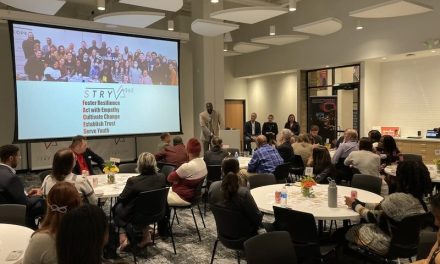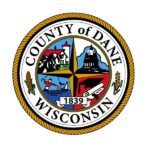
Unsung Heroes: School Nutrition Professionals Continue Feeding Communities
Madison – When Wisconsin schools closed in March due to the COVID-19 public health emergency, many families with school-aged children worried the school meals Wisconsin students rely on would no longer be available, which created additional uncertainty in an already stressful time.
Knowing the demand was great, school nutrition professionals across the state rose to the challenge and committed to meeting the need.
“It was never a question of ‘are we going to continue providing meals’, it was a question of ‘how can we continue providing meals in ways that are both convenient for families and safe for the community’,” says Jesse Bender, Director of Foodservice for the Tomah Area School District and President of the School Nutrition Association of Wisconsin. “Our number one priority is feeding our kids whether schools are open or not.”
The School Nutrition Association of Wisconsin (SNA-WI) is a nonprofit professional organization representing over 1,150 members who provide high-quality, low-cost meals to Wisconsin students. SNA-WI is a chapter of the national School Nutrition Association.
SNA-WI members are preparing thousands of meals per week while schools are closed during the public health emergency and distributing them for free to students and families through a variety of innovative means. Meals are intended for and available to all students. They are not meant for students in any specific socio-economic situations. All families with school-aged children can utilize school meal services.
Districts in all corners of the state are meeting the demand. The Superior School District is producing 3,300 meals per day. Pulaski Community School District is making 2,500 per day. Howard Suamico School District produces over 4,400 meals per day with increasing capacity. The Holmen School District has a drive-up site distributing over 900 meals each day.
Meals are free to students and families. Districts have been told meals will be reimbursed by the federal government through funds intended to reimburse districts for meals served during
summer school.
“When you consider that funds intended to reimburse schools for meals served during June, July, and August are also going to have to cover costs for meals served during March, April, and May, it’s hard to say to what extent we will be reimbursed,” says Bender. “However, we are committed to feeding our kids. Their wellbeing is our priority.”
School nutrition professionals are offering pick-ups for meals at various public sites including school parking lots, church parking lots, and grocery store parking lots. In some areas, both rural and suburban, districts are bringing meals right to families’ homes by partnering with district bus drivers. Meals are delivered directly to students’ homes at regular times.
The Tomah Area School District, for instance, has ten pickup sites throughout the district with three van routes also bringing meals directly to homes.
New Richmond School district is also offering four pick-up sites serviced by food trucks throughout the community. They are also offering direct-to-home delivery for families unable to come to pickup sites.
“We want to ensure it’s easy for students and parents to have access to meals,” said Caitlin Harrison, Food Service Director for Pulaski Community School District and SNA-WI member. “We don’t want parents worrying about how to get meals for their kids, which is why we’re offering various opportunities to get meals whether it’s delivery, school pick-up points, or community pick-up points.”
For stories on what individual districts are doing, check out the report on the great work being done in Osceola or the services being provided in districts across Brown County. These are just a couple examples of the work school nutrition professionals are doing each day in communities across the state to ensure kids and families are fed.
If you want more information on how to obtain meals for your family, please contact your local school district.





